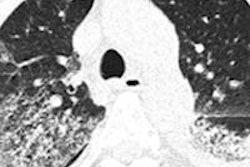Dear AuntMinnieEurope Member,
A major benefit of elastography is that it can identify differences in tissue stiffness that may indicate the presence of a tumor, and the technique is proving particularly promising in the breast.
Radiologists at the world-famous "Sapienza" University of Rome have extensive experience in this field, and they've just shared their knowledge in a comprehensive article in press in the European Journal of Radiology. Go to our Women's Imaging Digital Community, or click here.
Erasmus University in Rotterdam, the Netherlands, is another European center of excellence for medical imaging. Researchers there have looked at the best way to investigate chest pain, and their findings are worth a close look. Visit our Cardiac Imaging Digital Community, or click here.
In a slight departure from previous congresses, the organizers of last month's European Society of Gastrointestinal and Abdominal Radiology meeting delved deeply into professional challenges. Eminent speakers from Italy and Spain explained how health IT tools can help to raise radiology's profile. Get the story here.
Meanwhile, Danish researchers made a big impact at the recent Society of Nuclear Medicine and Molecular Imaging annual meeting in Vancouver, Canada. They spelt out why sodium fluoride PET/CT can provide greater sensitivity and specificity for the detection of bone metastases than planar bone scintigraphy and SPECT/CT. Click here to learn more.
Fresh information on bird flu continues to emerge. A new strain called influenza H7N9 has appeared in China, and investigators have published some of the first radiologic images of the effects of the virus, revealing typical patterns of progression and regression on CT scans and radiographs of the chest. Find out more here.
Proton therapy is an ideal fit for children, but comes with unique challenges and constraints, a respected U.S. scientist told attendees at the recent Particle Therapy Co-Operative Group meeting in Essen, Germany. For the full details, click here.




















